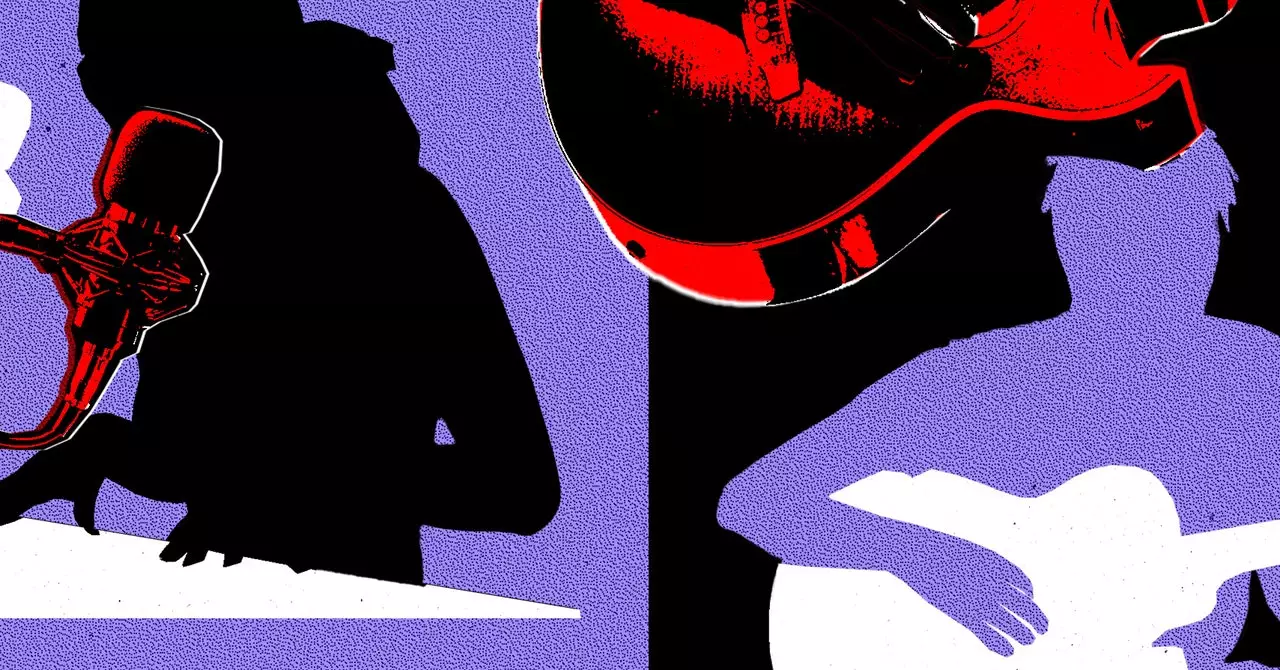The integration of artificial intelligence (AI) in music production has ignited fervent debates within the creative community. As tools evolve, they diverge beyond mere options for creating music from scratch, branching into areas such as stem extraction, mixing, mastering, and even lyric brainstorming. While AI innovations, exemplified by platforms like Google’s MusicFX, Suno, and Udio, have been embraced by independent artists, they have sparked contrasting responses among hobbyists and seasoned professionals alike.
To comprehend the impact of AI on modern music, it is essential to look back at analogous technological revolutions in music history. Renowned pop music writer Sam Hollander draws parallels between AI tools and the rise of drum machines in the 1980s. During that era, many session drummers had to acquire new skills in programming to adapt to the technological shift. Similarly, today’s musicians face a choice: either integrate AI into their creative processes or resist its influence entirely. This bifurcation reflects a tension in the music industry that mirrors the transitions seen in previous decades.
Hollander’s firsthand experiences illustrate a practical perspective on AI’s role in music production. He recounts a collaboration with a UK grime producer who relied on these tools to generate samples that could later be transformed and refined. The process of using AI-generated content, extracting the necessary stems, and then integrating them into tracks underscores the blending of technology with human ingenuity. Such examples illuminate the potential of AI to serve as a supportive instrument in the toolbox of contemporary music creators.
A notable response from parts of the music community towards AI’s encroachment has been resistance. Last week, numerous musicians and creatives rallied together, voicing their concerns via an open letter denouncing AI training as a “grave threat” to their livelihoods. This pushback emphasizes the emotional and economic stakes at play; artists fear AI may diminish their personal touch and authenticity. It speaks to a broader narrative where technology is often viewed as a foe encroaching upon cherished creative spaces.
However, amid this divide, forward-thinking artists like Hollander embrace AI’s potential benefits. Though he utilizes AI for sample generation and brainstorming, he maintains that human creativity remains irreplaceable. He insists that original lyrics are vital for the uniqueness of a piece, underscoring the importance of human input in steering AI outputs away from mediocrity. The understanding that AI struggles with humor and nuanced creativity exemplifies the need for human oversight to infuse personality into music.
The evolving landscape of AI-generated music can be categorized into two distinct spectrums: the “shock factor” and ambient genres. Projects that generate an overwhelming sense of novelty and surprise—like the viral SpongeBob rap—acquire attention through their absurdity and uniqueness. These pieces often resonate with the audience due to their unexpectedness, demonstrating the potential for AI to produce captivating content that catches people off guard.
Conversely, the emergence of AI in creating ambient or chill music indicates a different trajectory. YouTube channels, such as Home Alone and what is ?, have garnered millions of views by subtly incorporating AI-generated compositions. These platforms showcase how what began as experimental endeavors are now becoming mainstream, with AI outputs often indistinguishable from human-created work. The evolution of these channels suggests that, rather than a blatant disruption, AI may blend seamlessly into the musical landscape and redefine it from within.
As we look to the future, the crossroads at which the music industry finds itself is both challenging and exciting. The debate surrounding the use of AI in music production encapsulates a broader cultural conversation about technology’s role in creative expression. While some view AI as a harbinger of doom for traditional artistry, others see it as an opportunity for innovation and evolution. Artists are now faced with the dual task of preserving their artistic integrity while also embracing new tools that may enhance their creative endeavors. Ultimately, the collaboration between human creativity and AI could pave the way for unprecedented musical creations, provided that both forces work in harmony to elevate the art form rather than diminish it.

